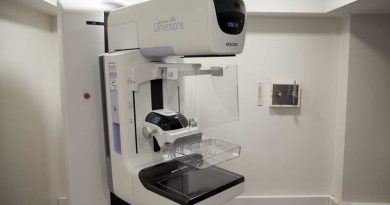How does the location of a hospital room affect quality of care?

Years ago, Lesley Meng, now an assistant professor of operations at Yale SOM, was talking to the medical staff of an emergency department at a large hospital. Among other things, the conversation revealed that every nurse’s identification badge carried an infrared location tracking chip, and that these tags (originally installed as a part of a communication system) sent out precise location information every six seconds to a set of receivers spread throughout the ED.
Well, that’s interesting, Meng thought. “In the operations field, it’s long been recognized, for instance, that time spent walking on a factory floor is time that could otherwise be spent producing, and so assembly line designers have worked to minimize the distance factory workers need to walk. “But we haven’t done a lot of this work in healthcare, or in the service sector more broadly—in settings that are often quite chaotic.”
With co-authors Robert Batt of the University of Wisconsin-Madison and Christian Terwiesch of the University of Pennsylvania, Meng used location data from the infrared tags to study how nurses managed the need to walk between patient rooms, and how these decisions affected a patient’s quality of care. Specifically, they wondered whether nurses, who walk roughly five miles on an average shift, try to cut down on unnecessary trips, and whether, intentionally or not, they visit distant rooms less often, compromising patient health.
The analysis examined five months of interactions between 217 nurses and nearly 30,000 patients. “The main takeaway, which is a relief, is that nurses do a great job: they are really equitable about how they are allotting time,” Meng says. “Regardless of where patients were on the ED floor they got the same amount of face time—but, importantly, it was delivered in a different way.”
For more distant rooms, nurses visited less frequently but for longer periods of time, leading the researchers to believe that they were “batching” tasks—that is, doing more than one thing at a time—for patients who were farther away. Numerically, the most distant rooms from the nurses’ station receive roughly 1.4 fewer visits per hour compared to an average room (a 50% decrease); but the visits were about 1 minute longer than average (a 50% increase).
Most importantly, the quality of care appeared to be consistent no matter where patients were located. “When we looked at outcomes like ED revisits and ED deaths, we were relieved to find there was no impact,” Meng says. “Regardless of which room patients were in, the providers were taking good care of them.”
The researchers did, however, note that as a consequence of this “batching” behavior, patients who were farther from the nurses’ station ended up waiting longer between visits by the nurse, and tended to ring their call buttons more often, something closely associated with a decrease in patient satisfaction and perceived service quality.
One potential way to mitigate this dissatisfaction, Meng suggested, would be clarifying the work that’s taking place behind the scenes in an emergency department. The idea draws from prior research on operational transparency, demonstrating that people are more content to wait for a status bar to load on a computer when they are told what the computer is doing (“checking memory,” “loading files,” etc.).
“The emergency department is a place where patients have no idea what’s going on behind the scenes,” Meng says. If you see anything, it tends to be your doctor or nurse visiting other patients. “But, in fact, there is a lot going on even if your doctor isn’t with you—your blood is being analyzed, a radiologist is looking at your X-ray—and if there were a way to provide this information to patients it might alleviate some of their impatience or stated dissatisfaction with care.”
For Meng, this study opens up important managerial implications not just in healthcare, but the service sector more broadly, where employees often manage how their time is divided between customers. How do servers in a restaurant dispense their tasks given various table assignments? How do flight attendants make sure people in the middle of a cabin, far from the galleys, are as happy with the service as those at either end?
Source: Read Full Article



